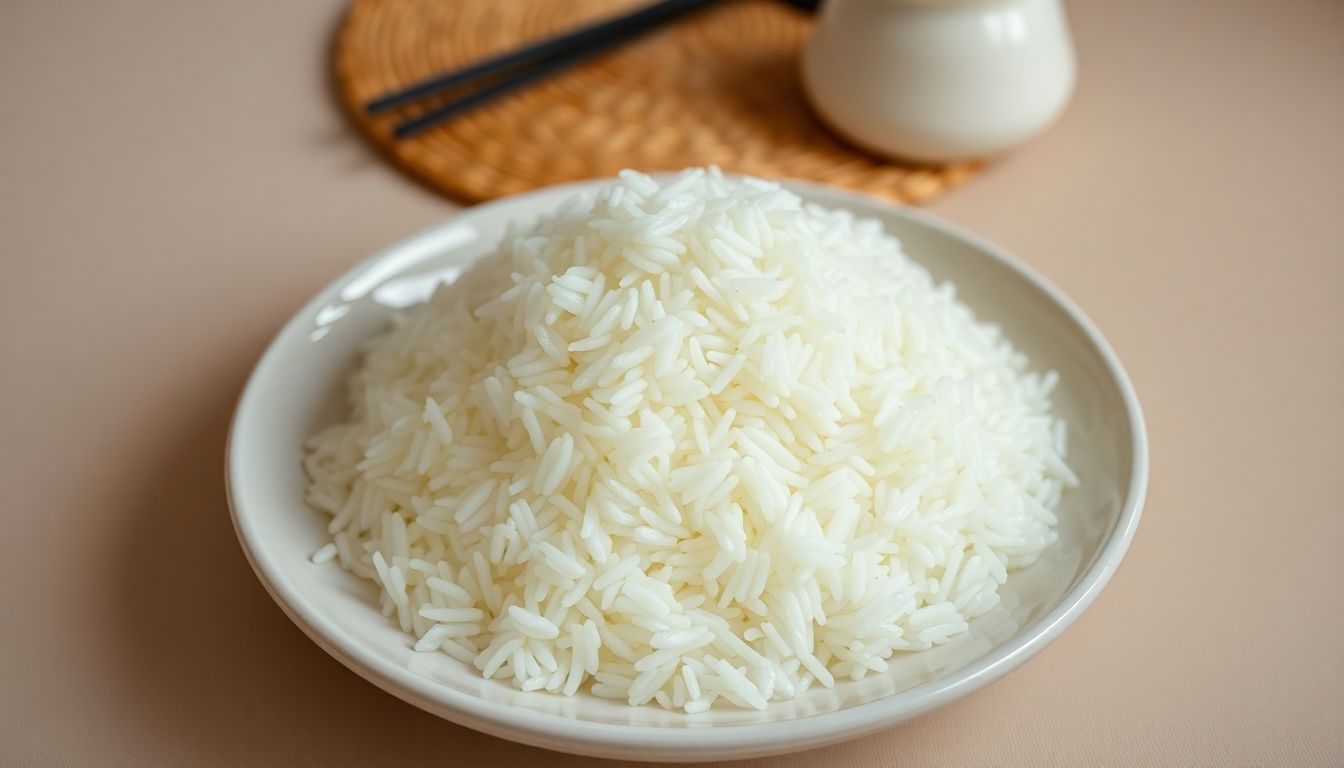
How Much Rice Do You Eat Per Day? A Guide to Healthy Rice Consumption
Rice is a staple food for more than half of the world's population. Did you know that rice consumption averages about 80 kg per person annually in some regions? Whether it's a comforting bowl of rice or a side dish at dinner, understanding how much rice to eat each day is vital for your health. This article will explore daily rice intake based on activity level, dietary needs, and health goals.
Factors Influencing Daily Rice Consumption
Individual Caloric Needs
Your daily caloric needs are not set in stone. They change based on several factors:
- Age: Kids and teenagers often need more calories than older adults.
- Gender: Men typically require more calories than women.
- Weight: Heavier individuals burn more energy.
- Activity Level: Active people need more fuel.
For instance, a sedentary adult woman may need about 1,800 calories daily, while an active man might need around 2,800 calories. Knowing your caloric need can help determine your appropriate rice portion sizes, ensuring you get enough energy without overindulging.
Dietary Goals and Restrictions
Your personal diet goals play a significant role in how much rice you can include in your meals:
- Weight Loss: Reducing rice portions may help. Aim for a smaller serving size, balanced with protein and vegetables.
- Weight Gain: Increase your rice intake by adding healthy fats or proteins for more calories.
- Dietary Restrictions: Low-carb diets limit rice consumption, while diabetic diets need careful management of carb intake.
Adapting your rice intake is crucial for achieving your dietary goals.
Type of Rice
Not all rice is created equal. Different types have varying nutritional benefits:
- White Rice: Processed, lower in nutrients but often enriched.
- Brown Rice: Whole grain, higher in fiber and nutrients.
- Wild Rice: High in protein, with a unique flavor.
The glycemic index (GI) of rice affects its impact on blood sugar levels. White rice has a higher GI than brown rice, making the latter a better option for controlling glucose levels. Choose the rice type that fits your health needs and promotes satiety.
Recommended Daily Rice Intake: A Comprehensive Guide
General Guidelines
The USDA offers general recommendations for rice consumption:
- Adults: 1-2 cups cooked rice per day, depending on activity level.
- Children: ½-1 cup, based on age and energy needs.
Helpful visual aids can summarize these servings in a table for quick reference. Always practice portion control to maintain a balanced diet.
For Weight Management
Managing your weight involves carefully adjusting your rice intake:
- Weight Loss: Focus on ½ cup of cooked rice, combined with proteins and plenty of veggies.
- Weight Gain: Consider having 1-2 cups with nutritious toppings.
Incorporating rice into meals can help manage hunger and portion sizes effectively.
For Athletes and Active Individuals
For those active or engaged in sports, carbohydrate needs increase:
- Athletes require more energy, making rice an essential fuel source.
- Consuming rice before workouts provides a quick energy boost, while a post-workout meal rich in rice helps replenish glycogen stores.
Recommendations for athletes vary but can be around 2-3 cups of cooked rice to meet their energy demands.
Understanding Rice's Nutritional Profile
Macronutrient Breakdown
Rice is primarily a source of carbohydrates but contains some protein and minimal fat. Here’s a quick look:
- White Rice: About 45g carbs, 4g protein, and 0.5g fat per cup.
- Brown Rice: Around 45g carbs, 5g protein, and 1.5g fat per cup.
Fiber content, which is higher in brown rice, aids digestion and promotes feelings of fullness. Processing methods, like polishing, can reduce nutrient density in white rice.
Micronutrient Content
Rice is rich in vitamins and minerals essential for health:
- Thiamin: Helps with energy metabolism.
- Iron: Vital for oxygen transport in blood.
- Magnesium: Supports muscle function and energy production.
Different rice varieties offer varied micronutrient profiles, making it worthwhile to diversify your choices.
Potential Health Benefits
Moderate rice consumption can provide several health benefits:
- Improved energy levels and digestion.
- Enhanced gut health thanks to fiber.
- Support for maintaining a healthy weight.
Research shows that balanced intake can lead to overall health improvements, but overconsumption can lead to unwanted weight gain or other health concerns.
Practical Tips for Healthy Rice Consumption
Portion Control Techniques
Effective portion control is crucial for managing rice intake:
- Use measuring cups for accuracy.
- Visualize a serving as roughly the size of your fist.
- Incorporate small plates and bowls to help control portions.
Cooking Methods
Healthy cooking methods can preserve rice’s nutritional value:
- Steaming: Retains nutrients well.
- Boiling: Quick, but can lead to nutrient loss if overcooked.
Experiment with baking or sautéing rice for delicious dishes that maximize health benefits.
Smart Swaps and Substitutions
Boost your rice dishes by adding healthy ingredients:
- Vegetables: Increase fiber and vitamins.
- Legumes: Add protein and stretch portions.
- Healthy spices: Enhance flavors without extra calories.
Once you adopt these swaps, you'll enjoy nutritious rice-based meals.
Conclusion
In conclusion, individual factors greatly influence daily rice intake. It’s essential to consider your caloric needs, dietary goals, and preferred rice type. For a healthy lifestyle, finding the right amount of rice can support your energy, nutrition, and overall well-being. Start evaluating your daily rice consumption today to meet your personal health goals.